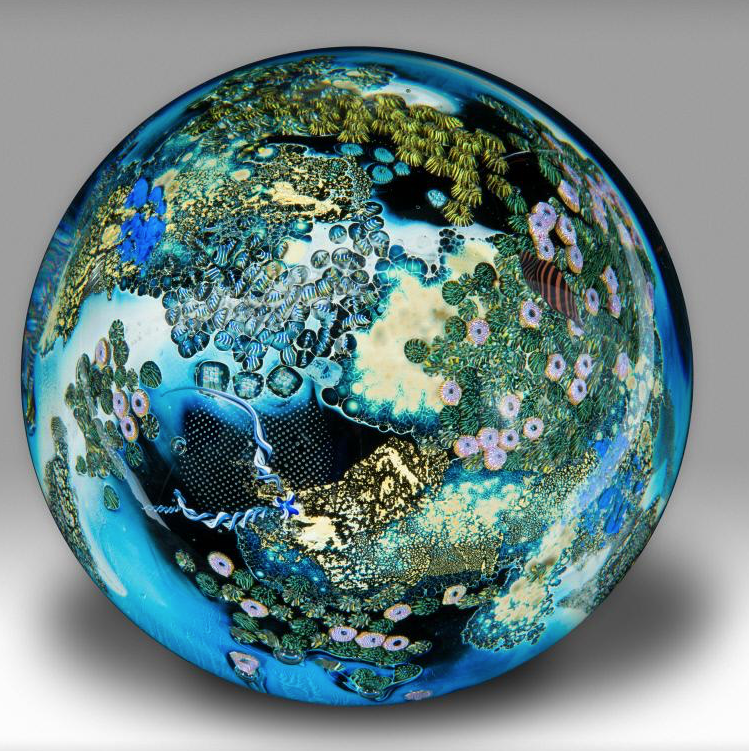The Philip and Nancy Kotler Glass Collection is comprised of works by many of the leading glass artists in the American and European traditions, and includes works by Nicolas Africano, Silvia Levenson, Peter Hora, and Stanislav Libensky among many others. Nancy and I donated our Studio Glass collection to The Ringling in 2012 to share our love for Studio Glass with the public.
Megaplanet 5.4 by Josh Simpson (1989); Glass; 8 x 8 x 8 in. (20.3 x 20.3 x 20.3 cm)
The contemporary works of art on view belong to a lineage of creativity beginning about 2000 BCE in Mesopotamia (present-day Iraq and northern Syria) where glass was first cast in simple molds. People have long prized glass for the fact that the objects made from it are both useful and decorative. While glass artists were honored in the Ancient and Medieval worlds, glass itself became associated with utilitarianism and craft, or at best as decorative embellishment, as the centuries progressed.
In the late 1950s, Harvey K. Littleton, a ceramist on faculty at the University of Wisconsin in Madison, began to experiment with ways in which new glassblowing techniques might be employed to expand the possibilities of the material. His goal was to encourage small glassblowing studios to form across America, like those associated with Murano in Italy, where experiments could take place. In collaboration with Dominick Labino, Littleton gave two lectures in glassblowing at the Toledo Museum of Art in 1962. This is generally cited as the beginning of what would come to be known as the American Studio Glass movement. Early experimentation was hampered by a lack of technique, so by the late 1960s American glass artists sought guidance from European artists in countries such as Czechoslovakia (now the Czech Republic) and Italy, where traditions and techniques had remained strong.
The glass works Nancy and I donated comprise an overview of the very best in the American and European Studio Glass tradition. Unlike their predecessors, those artists associated with Studio Glass are focused on maintaining the artist as designer of unique pieces and are committed to the sharing of ideas and techniques, something that would not be possible in an industrial setting. Fifty years since its beginning, the Studio Glass movement has helped the medium to stake its rightful claim as fine art within the museum.
View the collection here >>
Imminent Fear by Mark Bokesch-Parsons (1998); Glass, paint; 22 1/2 x 24 x 5 in. (57.2 x 61 x 12.7 cm)

